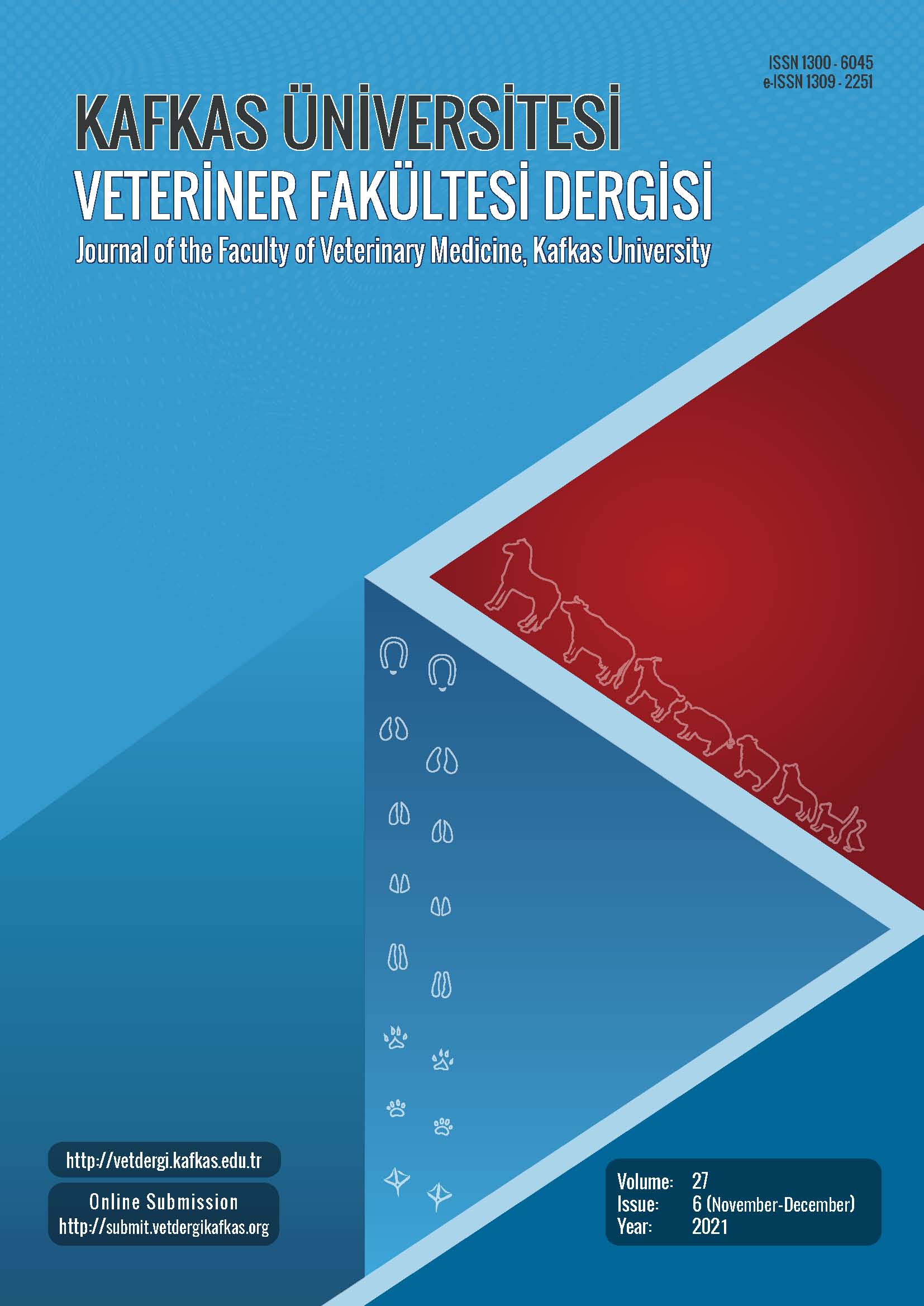
This journal is licensed under a Creative Commons Attribution-NonCommercial 4.0 International License
Kafkas Üniversitesi Veteriner Fakültesi Dergisi
2021 , Vol 27 , Issue 6
Determination of Gender and Breed in Arabian Horses and Thoroughbred Horses Using Radiography of the Tarsal Region
1Department of Surgery, Faculty of Veterinary Medicine, Istanbul University-Cerrahpaşa, TR-34320 Avcılar/Istanbul - TURKEY2Department of Anatomy, Faculty of Veterinary Medicine, Istanbul University-Cerrahpaşa, TR-34500 Büyükçekmece, Istanbul - TURKEY
3Department of Anatomy, Faculty of Veterinary Medicine, Selçuk University, TR-42003 Konya - TURKEY
4Faculty of Veterinary Medicine, Agricultural University of Tirana, Tirana, ALBANIA
5Jockey Club of Turkey, Istanbul Horse Hospital, TR-34144 Istanbul - TURKEY
6Unidad de Anatomía, Facultad de Veterinaria, Universidad de la República, Montevideo, URUGUAY
7Vocational School of Veterinary Medecine, Equine and Equine Training Programme, Istanbul University-Cerrahpaşa, TR-34320 Avcılar, Istanbul - TURKEY DOI : 10.9775/kvfd.2021.26337 In this study, it was examined whether the radiographic measurements taken from the tarsal region, especially the calcaneus, can be used in sex determination. In addition, two different horse breeds were used and whether these values would cause any difference between the breed was examined. 213 race horses were used in this study. Radiographic images of the left tarsal joint of Arabian horses (30 females, 57 males) and Thoroughbred horses (57 females, 69 males) were taken from the lateromedial direction. The widest point of the trochlea was seen to be a determinant in sex determination of Arabian horses. In Thoroughbred horses, it was seen that the value of the calcaneus body was the most important factor in sex determination. As a result of the discriminant analysis, 71.26% of male and female Arabian horses and 66.67% of Thoroughbred horses, respectively were classified correctly. It was observed that 88.26% of the horses between the two breeds were classified correctly regardless of sex. In the correlation test between measurements, negative correlation value with age was seen in the talus measurement (correlation value: -0.139-099). In conclusion, radiological measurements of this clinically important region can be used as an alternative method for sex and breed discrimination. Keywords : Calcaneus, Discriminant analysis, Equine, Limbs, Radiometric, Talus










